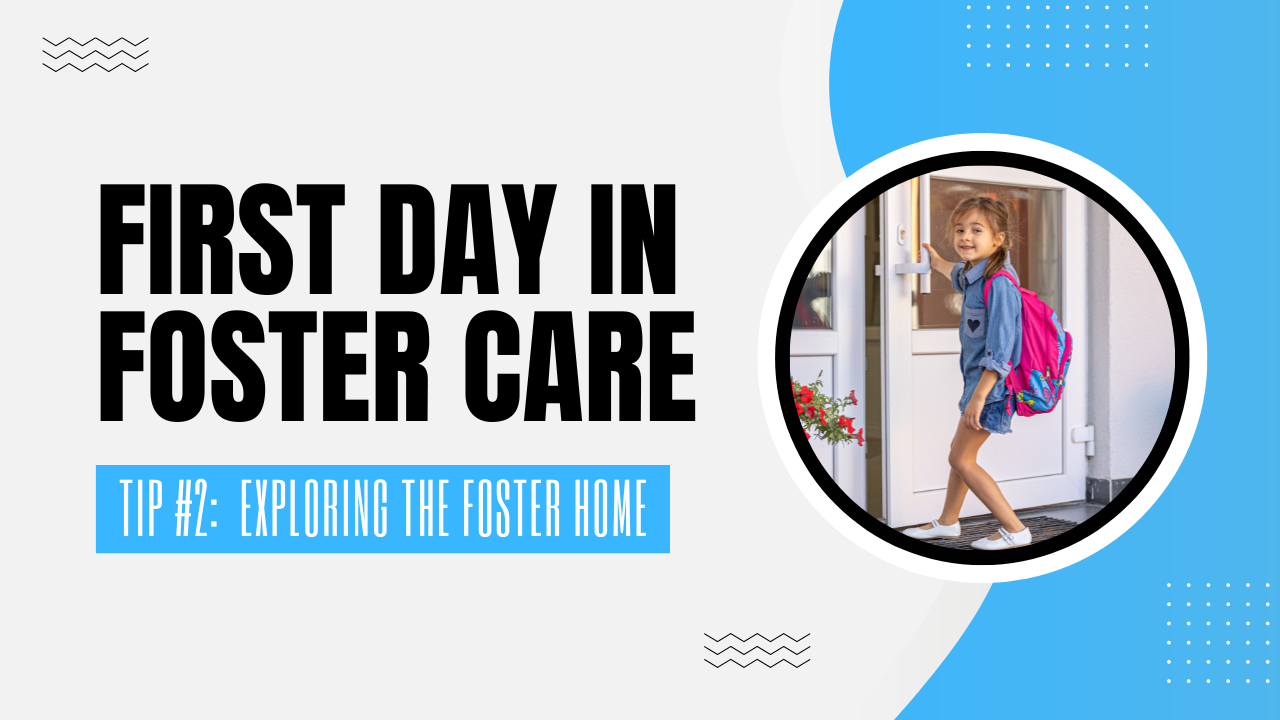
Here’s another tip on employing empathy to make a child’s first day in foster care less stressful – focusing on their new environment:
Once the paperwork is done (and if it’s not already occurred), offer a tour of the home, paying particular attention to the bathroom, their bedroom and key details about the kitchen:
Point out the bathroom(s) available for their use, and before the end of that first day, show them where you put dirty laundry, keep fresh towels, and what you do with wet towels and washcloths, where they can find extra toilet paper and soap, which shampoo is theirs etc.
In the kitchen note where the snacks are kept and when they can be eaten, where the drinking glasses and utensils are located, what time you usually have your meals, who prepares them and where you eat them. This is a good time if you haven’t done so yet, to ask if the child is hungry or thirsty; meet those basic needs! Ask if they have a favorite food or foods they prefer so that you can prepare or provide a comforting meal as soon as you’re able!
Explore the child’s bedroom with them, and invite them to place any belongings in spaces provided. Ensure their room is well-prepared, i.e., beds made with an extra blanket and pillow; available drawer and closet space; that the room has age appropriate items to make it seem welcoming if possible (such as age appropriate artwork on the wall, books, toys or games); a clock; and charging cords for cell phones. You can always redecorate together, later on. (Many families leave the bedroom ‘blank’ so the child can decorate it themselves, however sometimes the child feel that this put too much pressure on them in the beginning, and that the room seems very uninviting without any decorations.) A basket or drawer containing personal care items such as new pajamas, toothbrush, toothpaste, hairbrush, comb, other hair care products, snacks, a bottle of water, and for older children, providing deodorant, and as applicable, feminine hygiene products will alleviate the need to ask for those things). Ask about their usual bed time, and let them know what the family’s bedtime schedule typically is.
Point out the location of the home’s phone and emergency numbers and the fire escape plan. Show them where the smoke detector nearest their bedroom is located, and from their bedroom doorway, demonstrate the way out of the home if the detector goes off during the night. Consider putting a nightlight in the hallway to illuminate safe passage! Some houses make scary sounds at night (creaks, beeping noises, heating system clicks, wind whistling in the pine trees etc.)- describe what they might hear and their sources. Show the child where your bedroom is located, and let them know what do to if they need something during the night.
Ask about shower/bath preferences for morning or evening so that a time accordingly can be determined but don’t insist they bathe on that first night if they seem hesitant. (Bathing and nighttime can both serve as trauma triggers for some children with abuse histories)
Introduce the child to any other primary living areas of the home such as the family room, and if age appropriate, the TV and how to use any remote controls. Describe the typical evening activities for various family members, and ask if there’s anything in particular that the child would like to do before the day winds down.
Finally, let them know at bedtime what the family’s routine is in the morning; i.e. what time does everyone usually get up? Does everyone use alarm clocks or do parents wake the kids? Does the family stay in pajamas or get dressed before breakfast? How is breakfast managed (e.g., every man for themselves or together?), what time does everyone need to be ready for school or work?
Any other information about the living space or routines unique to your home that will assist with the adjustment should be offered. These simple steps in acclimating the child to your home will go far in alleviating the fear and uncertainty of the day.


